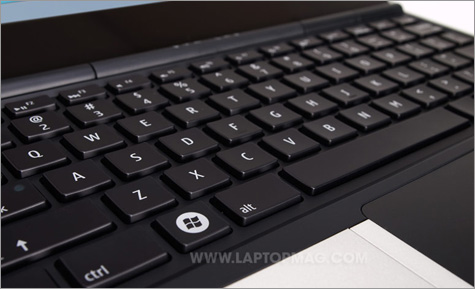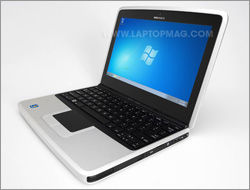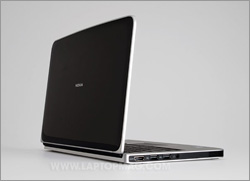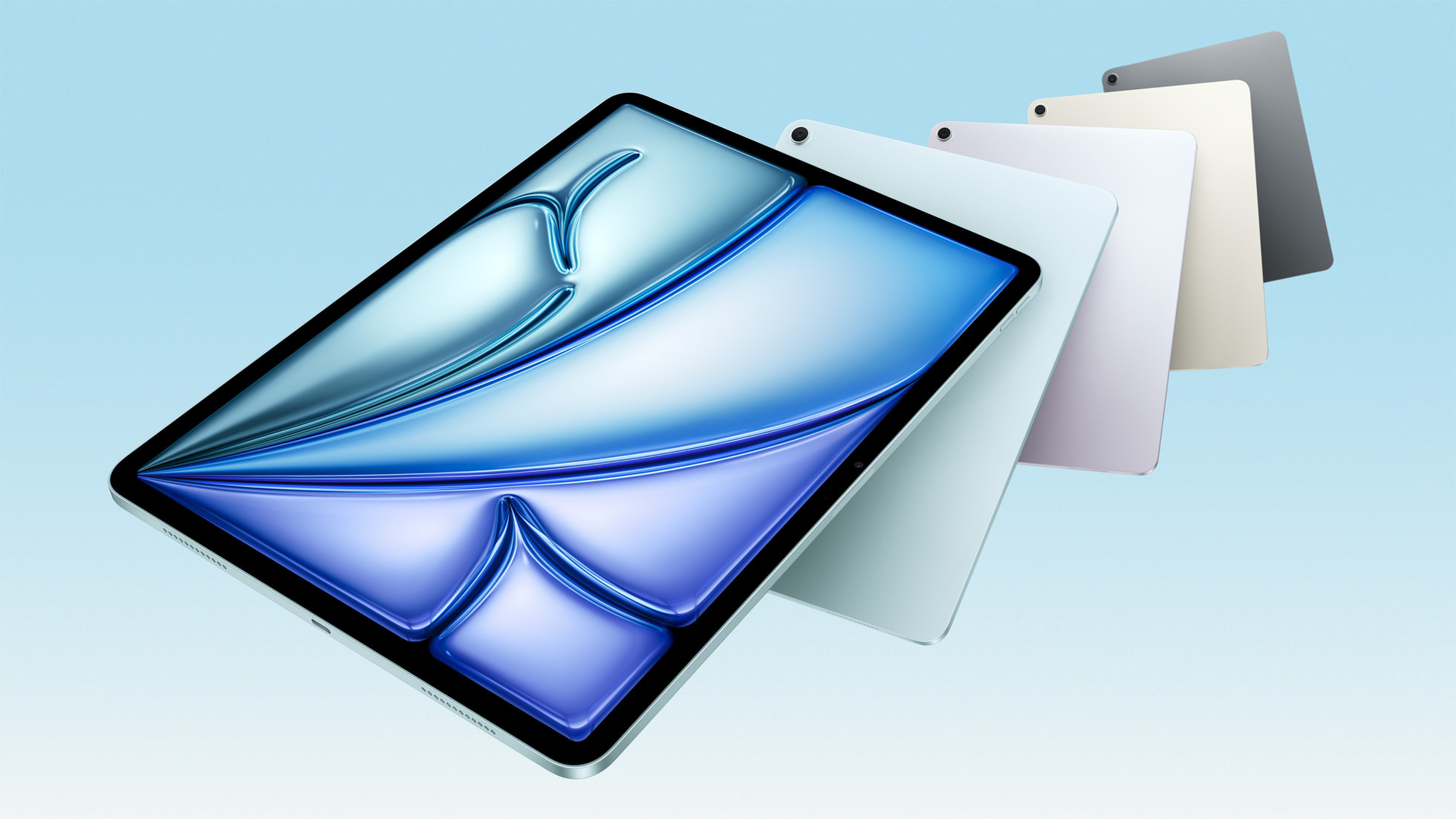Laptop Mag Verdict
This aluminum 3G netbook delivers plenty of style and endurance, but it's relatively small keyboard and slow performance diminish its appeal.
Pros
- +
Attractive design
- +
Bright, high-res screen
- +
Long battery life
- +
Strong 3G connection
Cons
- -
Slow performance
- -
Cramped keyboard
- -
Long boot time
- -
Weak speakers
Why you can trust Laptop Mag
The Nokia Booklet 3G arrives with a fair amount of hype surrounding it. That's because this is Nokia's first foray into the netbook space, and because the machine boasts a MacBook-esque design. This 10.1-inch laptop ($299 with a two-year wireless broadband contract; $599 unsubsidized) definitely looks and feels more expensive than most other netbooks while offering long battery life and built-in mobile broadband. However, the Booklet 3G's small keyboard and slow performance hold it back.
Design
The glossy black lid (also available in blue or white) and aluminum-covered body give the Booklet an attractive, MacBook-like look when the system is closed. When you open the lid, you see the aluminum extends to the system's deck, and a tasteful, glossy black bezel borders the screen. However, it's hard to miss the cheap plastic keyboard, which contradicts the otherwise upscale design.
At 10.4 x 7.3 x 0.8 inches and 2.8 pounds, the Booklet is a little bit smaller than competitors such as the Toshiba mini NB205 (10.4 x 8.3 x 1.3 inches, 3.0 pounds), the Samsung N120 (10.7 x 7.4 x 1.2 inches and 2.8 pounds), and the HP Mini 311 (11.4 x 8.0 x 1.2 inches, 3.2 pounds). This netbook is very easy to tote, but you have to make some tradeoffs.
Keyboard and Touchpad
The Booklet's 78-key chiclet-style keyboard has its keys in all the standard positions, and there was no noticeable flex. On the other hand, the keys are small (even for a netbook), and a bit stiff. Despite our discomfort, we were able to achieve our typical 80 words per minute and a strong 0-percent error rate on the Ten Thumbs typing test.
The black plastic touchpad on the Booklet 3G isn't particularly attractive, but it's accurate and pleasant to use. It even supports the multitouch pinch gesture for zooming in and out, and the two metal mouse buttons offer good tactile feedback.

Click to enlarge
Display and Audio
The 10.1-inch glossy screen is a bright spot for the Booklet 3G. The colorful panel offers sharp images at its native 1280 x 720 resolution, which is much higher than a typical netbook's 1024 x 600 screen. We really appreciated the additional screen real estate when navigating around the desktop, surfing the Web, and using applications such as Google Earth. Images even remained bright and colorful when the screen was viewed from a 90-degree angle.
Even though the Booklet's 1280 x 720 screen is capable of displaying 720p video, the system lacks the horsepower to be a decent multimedia machine. Full-screen video playback was a bit jerky and pixilated when streaming a 720p episode of Fringe from Fox.com, but a 720p WMV file we downloaded from Microsoft's WMV HD Content Showcase looked better.
The Booklet's side mounted speakers are nothing to write home about, either. When streaming both heavy metal and a jazz from Napster, the sound was a bit tinny and distorted. Moreover, the music was incredibly soft, even at maximum volume.
Ports and Webcam
Like most netbooks these days, the Booklet has three USB 2.0 ports and an SD Card reader. It also sports a slot on the right side for a SIM Card. A single 3.5-inch audio in/out jack on the left replaces the typical dual microphone/audio out jacks you find on most notebooks.
What's atypical is that the Booklet has an HDMI-out port instead of VGA; we've only seen this on the Dell Mini 10 (with a TV tuner) and the Nvidia Ion-powered HP Mini 311. As many mainstream external monitors don't support HDMI, we can only assume the Booklet is meant to attach mainly to more expensive, high-end components such as flat screen TVs. Unfortunately, the Booklet isn't the right system to power your home theater.
The 1.3-megapixel webcam captures sharp, smooth video, even in low light. When conducting a Skype call, our friend was able to see fine details of our face and watch us move around smoothly, even in a dimly-lit room.
Performance

Click to enlargeThe Booklet's combination of an underpowered 1.6-GHz Intel Atom Z530 processor, 1GB of RAM, and a 4,200-rpm, 120GB hard drive provided sluggish, frustrating performance. We were unable to run two of our usual benchmarks: PCMark Vantage, which measures overall system performance, and 3DMark06, which measures graphics prowess. However, the Booklet scored 787 on the Geekbench performance benchmark, which is about 50 points below the netbook category average of 834, 18 points below the Toshiba mini NB205-N330BL (805), and 101 points below the HP Mini 311 (888).
The Booklet took a pokey 32 minutes and 9 seconds to transcode a 5-minute-and-5-second (114MB) MPEG-4 to AVI using HandBrake. That's over two and a half minutes behind the netbook category average, and slower than the ASUS Eee PC 1008HA Seashell running Windows 7 (29:10).
The Booklet's 4,200-rpm hard drive took a very long time to boot Windows 7 Starter Edition. After we hit the power button, the system took 55 seconds to display the Windows desktop, but that was just the beginning. It then took an additional 27 seconds to load most of the tray icons, including the bulky F-Secure Internet Security suite. However, the Windows 7 ring of fire continued to spin as the system took another 40 seconds to load the AT&T connection manager. Finally, after just over 2 minutes (2:02), we had full control over the desktop. Uninstalling F-Secure shaved about 20 seconds off this time.
The tardy hard drive was just as bad when it came to file operations. It took a leisurely 7 minutes and 3 seconds to complete the LAPTOP Transfer Test, in which we copy 4.97GB of mixed media files from one folder to another. That's a rate of 12.0 MBps, which is below the category average of 15.4 MBps and way behind the ASUS Eee PC 1008HA Seashell (22.2 MBps) and Toshiba mini NB205-N330BL (17.9 MBps).
Graphics Performance
Though we were unable to run 3DMark06 and put a numerical value on the Booklet's graphics prowess, using graphics-intensive apps proved a huge disappointment. As mentioned above, even standard definition video was noisy and hesitant. When we loaded Google Earth, we were equally discouraged, as images were slow to render and panning speeds were limited. When we turned on flight simulator mode, images were extremely blurry and slow to render.
Wi-Fi and Battery Life
As a netbook created by a smart phone company, the Booklet isn't wanting for connectivity. Using its 802.11b/g/n Wi-Fi, the netbook saw throughput of 18.1 Mbps at 15 feet and 13.7 Mbps at 50 feet from our access point. Those scores are about 2 Mbps and 3 Mbps slower than the category average, respectively.
For times when you're not near a hotspot, the Booklet also lets you connect to AT&T's HSPA network. The cost is $60 per month for 5GB of data. We especially like how easy it is to get online; all you need to do is press Fn + F10 on the keyboard, select 3G among four icons (3G, Airplane mode, Bluetooth, and Wi-Fi), and the Booklet 3G automatically connects. You don't need to use the separate AT&T connection manager software, but it's there.
Using Speedtest.net, we saw average upload speeds between 130 Kbps and 360 Kbps, and download rates between 700 Kbps and 1.2 Mbps. That's pretty good throughput, but a little less than what we saw with the Gateway LT2016u, which uses Verizon Wireless' EV-DO Rev.A network.
Another area where the Booklet excelled was endurance. Its 16-cell battery lasted 8 hours and 24 minutes on our LAPTOP Battery Test (Web surfing via Wi-Fi). That's a little more than 3 hours longer than the netbook average, but about an hour short of the Toshiba mini NB205. We will update this review after we test the notebook's endurance over 3G.
Software

Click to enlargeFor a premium-priced system, the Booklet comes with a stripped-down OS and software. Instead of Windows 7 Home Premium, Nokia has opted for the less-expensive Starter Edition, which does not let you change your wallpaper, desktop theme, or take advantage of user interface eye candy like Aero Peek or thumbnail previews in the taskbar.
The Booklet comes with a minimal amount of preloaded software. A trial edition of F-Secure Internet Security provides firewall and antivirus protection, though it adds significantly to the boot time and is extremely intrusive, with numerous prompts whenever any piece of software attempt to access the Net. The connection manager software allows you to control 3G antennas, Bluetooth, and Wi-Fi.
Nokia's Ovi suite allows owners of Nokia phones to sync contacts between their handsets and the Booklet using a bundled USB-to-phone cable. The system also includes a Windows gadget for Ovi Maps, which, like Google Maps, can pinpoint your location and help you find nearby points or interest or directions. Nokia also says it is packing Social Hub social networking software into the Booklet, but we could not test this feature since it was not preinstalled on our review unit.
Configuration Options
There is no option to configure the Booklet, though Nokia advertises that, like any Windows 7 system, you can upgrade it to Windows 7 Home Premium or Professional. The RAM slots and hard drive are not easily accessible, so it may be difficult or impossible for users to upgrade the hardware themselves.
Verdict and Value
We typically recommended against netbooks with built-in 3G because they offer modest savings in exchange for locking you into a hefty service charge for 24 months. However, the Nokia Booklet 3G stands out from the subsidized crowd with a clean, modern design, and by offering about 8.5 hours of battery life. On the other hand, the Toshiba mini NB205 has a speedier 5,400-rpm hard drive, lasts nearly 9 hours on a charge, and comes with a much better keyboard for $229 (with a two-year commitment to Sprint or Verizon Wireless). And the HP Mini 311 boasts a high-res 11.6-inch screen and discrete Nvidia Ion graphics for just $199 after a $100 online discount (on a two-year Verizon contract). In other words, you have to really like the aluminum design of the Booklet 3G to pay $299.
Nokia Booklet 3G Specs
| Bluetooth | Bluetooth 2.1 EDR |
| Brand | Nokia |
| CPU | 1.6-GHz Intel Atom Z530 |
| Card Slots | SD memory reader, SIM |
| Company Website | http://www.nokiausa.com |
| Display Size | 10.1 |
| Graphics Card | Intel GMA 500 |
| Hard Drive Size | 120GB |
| Hard Drive Speed | 4,200rpm |
| Hard Drive Type | SATA Hard Drive |
| Mobile Broadband | AT&T 3G |
| Native Resolution | 1280 x 720 |
| Operating System | MS Windows 7 Starter |
| Ports (excluding USB) | HDMI, Audio-out, Audio-in |
| RAM | 1GB |
| RAM Upgradable to | 1 GB |
| Size | 10.4 x 7.3 x 0.8 inches |
| USB Ports | 3 |
| Video Memory | 251MB |
| Weight | 2.8 pounds |
| Wi-Fi | 802.11b/g |

